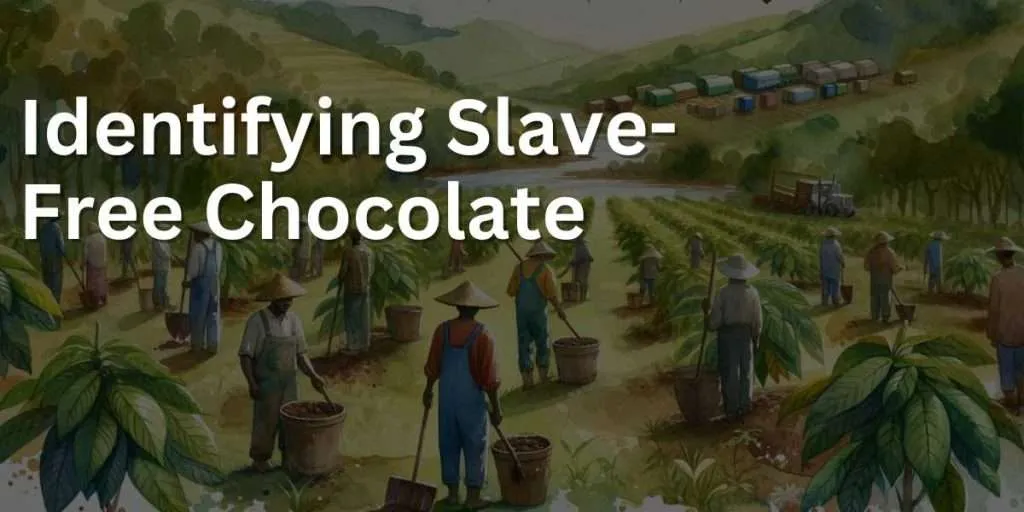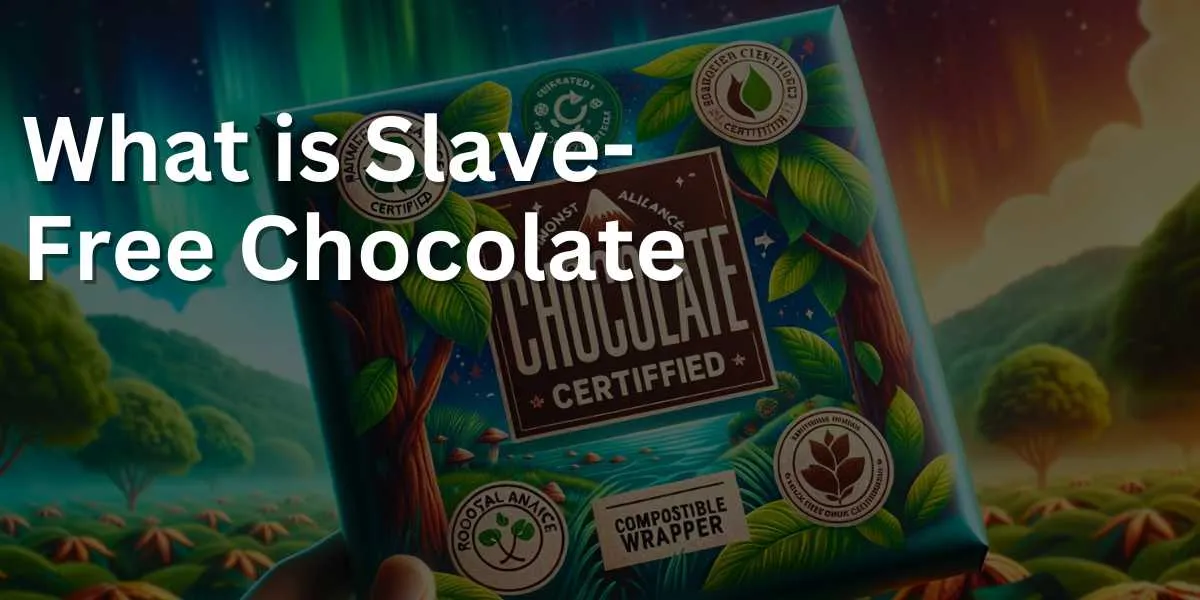Slave-Free Chocolate represents an ethical approach to chocolate production, ensuring that every step of the process, from cocoa bean harvesting to the final product, is free from child labor, forced labor, and any exploitative practices.
The chocolate industry has faced scrutiny over the years due to disturbing reports of unethical labor practices, especially in major cocoa-producing regions. Slave-Free Chocolate prioritizes human rights, guaranteeing that workers are treated fairly, paid appropriately, and not subjected to inhumane conditions. It’s about consciously choosing products that advocate for change and promote ethical business standards.
Ready to explore the world of ethical chocolate consumption? Dive into this comprehensive guide on Slave-Free Chocolate, its significance, and how to support this essential movement.
In essence, slave-free chocolate represents a move towards more ethical consumption in the chocolate industry, prioritizing the rights and well-being of cocoa farmers and workers.
Key Takeaways: What is Slave-Free Chocolate?
- Ethical production: Slave-free chocolate emphasizes human rights by ensuring that cocoa is sourced from farms that do not exploit workers, especially children.
- Addressing a significant issue: The cocoa industry, particularly in West Africa, has faced scrutiny due to reports of child labor and unfair working conditions on many farms.
- Certifications and labels: Slave-free chocolates often carry certifications like Fair Trade, Rainforest Alliance, or UTZ, which indicate adherence to specific ethical standards.
- Higher costs but for a reason: Ethically produced chocolates might be more expensive than others, reflecting the fair wages paid to workers and investments in sustainable farming practices.
- Transparency in sourcing: Brands promoting slave-free products typically prioritize transparency, often providing information about where their cocoa comes from and how it’s harvested.
- Benefits beyond labor: Ethical chocolate production can also mean sustainable farming practices that benefit the environment and ensure the long-term viability of cocoa farming.
- Consumer awareness: The demand for slave-free chocolate has grown as consumers become more conscious of the ethical implications of their purchases.
- Supporting communities: By choosing slave-free chocolate, consumers indirectly support farming communities, ensuring they receive fair wages and have access to essential services like education and healthcare.
- Quality and taste: Many slave-free chocolates prioritize quality, resulting in products that not only have ethical benefits but also offer a rich and premium taste.
- Encouraging industry change: The rising demand for ethical products can influence larger brands to reevaluate their supply chains and commit to more ethical sourcing practices.
Slave-Free Chocolate Meaning
Slave-free chocolate denotes a production process in the chocolate industry that is devoid of any form of forced labor, exploitation, or abuse. This term specifically underscores a commitment to ethical sourcing and manufacturing, ensuring that every individual involved in the cocoa supply chain, from farmers to factory workers, receives fair compensation and works under humane conditions.
The emphasis on “slave-free” addresses historical and ongoing concerns about labor abuses, especially in major cocoa-producing regions. In essence, slave-free chocolate stands as a beacon of ethical consumerism, where purchasing decisions are intertwined with principles of human rights and social justice, championing both the product’s quality and the dignity of those who produce it.
To understand the slave-free chocolate, you must first understand the chocolate industry.
The Sad State of the Chocolate Industry
The chocolate industry is a multibillion industry driven by cocoa plantations and cocoa farmers. Nonetheless, whereas the big chocolate companies make millions and even billions of euros of revenue each year, the average cocoa farmer from a country in West Africa, the world’s largest cocoa-producing region, earns just 67- euro cents a day.
Farmers are unable to sustain their lives, let alone their farming activities. The result is high debts, child labour, and exploitation to help cut down on costs. In 2001, this situation prompted chocolate manufacturers of the world to sign the Harkin-Engel Protocol, which aimed at producing slave-free chocolate as of 2005 onwards.
Nonetheless, none of the companies in the agreement make an effort to uphold it. This means that most of the chocolate in the market has been produced from cocoa beans reared by child labourers or exploited workers. The state of the chocolate industry is such that the manufacturers keep making millions day in day out, while the cocoa farmer is left to languish in poverty.
Defining Slave-Free in the Chocolate Industry
In the realm of chocolate production, the term “slave-free” holds profound significance, denoting an ethical and humane approach to sourcing and manufacturing. Specifically, “slave-free” in this context refers to the absence of forced labor, child labor, and any form of exploitation throughout the entire cocoa supply chain.
This encompasses everything from the farming of cocoa beans to the final stages of chocolate production. The chocolate industry has, unfortunately, been historically linked to labor abuses, particularly in major cocoa-producing regions.
As consumer awareness grows, the demand for slave-free chocolate emphasizes the importance of transparency, fair wages, and safe working conditions for all involved in the process. By supporting slave-free chocolate, consumers play a part in promoting ethical practices and ensuring a brighter future for the industry.
Historical Context: Chocolate and Labor Exploitation
The intricate relationship between chocolate and labor exploitation has deep historical roots, tracing back to colonial times. When European powers began establishing colonies in cocoa-producing regions, primarily West Africa and Latin America, the lucrative potential of chocolate was rapidly recognized.
To meet the surging demand in Europe, colonial powers heavily relied on forced labor, often in the form of indigenous servitude or imported slave labor, to cultivate and harvest cocoa beans. The vast plantations, under colonial oversight, became notorious for their harsh working conditions, minimal wages, and overall mistreatment of workers.
Even post-colonialism, remnants of these exploitative practices lingered, with some areas continuing to grapple with issues of child labor and unfair wages. The historical intertwining of chocolate production with labor exploitation underscores the pressing need for ethical reforms and transparency in today’s chocolate industry.
The Modern Chocolate Supply Chain: Where Slavery Persists
In today’s globalized world, the chocolate supply chain is a complex web that spans continents, from cocoa cultivation to final product distribution. Despite advancements and increased scrutiny, certain segments of this chain remain tainted by the shadows of forced labor and exploitation.
Primarily, West Africa, home to the majority of the world’s cocoa production, continues to grapple with issues of child labor and forced servitude. Many small-scale farmers, facing economic pressures and lacking resources, sometimes resort to exploitative practices to meet demands.
Intermediaries, or “middle men,” in the supply chain have been identified as culprits, capitalizing on the vulnerabilities of impoverished communities. The persistence of these issues in the modern chocolate supply chain emphasizes the urgent need for comprehensive industry reforms, robust monitoring mechanisms, and consumer awareness to drive ethical sourcing and production.

Identifying Slave-Free Chocolate: Labels and Certifications
In the quest to support ethical chocolate consumption, recognizing genuine slave-free products is paramount. Fortunately, several labels and certifications serve as markers of ethical sourcing and production.
Key certifications such as Fair Trade, Rainforest Alliance, and UTZ indicate that the chocolate has met specific standards, which often include fair wages and humane working conditions. These labels undergo rigorous checks and are often accompanied by a recognizable logo on the packaging.
Some chocolate brands provide transparent sourcing information, detailing their supply chain practices and partnerships with cocoa farmers. Consumers should also be wary of vague or generic terms like “ethically sourced” without a corresponding certification, as these can sometimes be misleading.
By prioritizing products with trustworthy labels and certifications, consumers can actively promote slave-free chocolate and champion ethical practices within the industry.
A Special Recipe to End Modern Slavery and Child Labour
The massive inequalities in the chocolate industry prompted ethical brands like Tony’s Chocolonely to come up with slave-free chocolate. Slave-free chocolate is chocolate produced by cocoa beans cultivated free of child labour, forced labour, or exploitation.
Companies involved in the manufacture of slave-free chocolate make an effort to end slavery and child labour in cocoa-growing regions. How do they do it? Take Tony’s Chocolonely as an example. The company has been making slave-free chocolate for 14 years now.
Here is their recipe to ending modern slavery and child labour, and producing slave-free chocolate.
- Traceable cocoa beans
- Paying a higher price above the Fairtrade premium so farmers can earn a decent income and comfortably run their farms.
- Strong farmers- Investing in cooperatives and allowing farmers to achieve economies of scale.
- Working with farmers and cooperatives in the long term, giving them income security and allowing them to invest.
- Encouraging improved productivity and less dependency on cocoa.
Why Slave-Free Chocolate Might Cost More
Ethically-produced, slave-free chocolate often carries a higher price tag, and there are concrete reasons behind this pricing structure. At the heart of slave-free chocolate is the commitment to fair wages and humane working conditions for cocoa farmers and workers. Ensuring equitable compensation inherently increases production costs.
Certification processes, such as Fair Trade or Rainforest Alliance, involve rigorous monitoring and verification, which also come with associated expenses. Moreover, ethical brands frequently invest in sustainable farming practices and community development projects, further elevating costs.
While these factors might lead to a higher retail price, they reflect the true value of chocolate produced without exploitation. By supporting slave-free chocolate, consumers are not only advocating for ethical practices but also contributing to a more sustainable and equitable industry.
Changing the Industry
The ultimate goal of brands like Tony’s Chocolonely is to change the chocolate industry and make 100% slave-free chocolate the norm. Here is how they plan to do it:
- To create awareness for both farmers and consumers
- To lead by example
- To inspire action
They can’t do it alone. Tony’s Chocolonely can only do as to manufacture slave-free chocolate. Baba Me can only do so much as to make it available for you to buy. They need you. Every bar of Tony’s Chocolonely bought allows a West African farmer to provide for their family, and a school going child to keep going to school. Help change the lives of cocoa farmers in West Africa by buying Tony’s Chocolonely.
Impact on Communities: Beyond Just Being Slave-Free
Adopting slave-free and fair trade practices in the chocolate industry has ripple effects that extend far beyond the immediate realm of labor rights. Cacao-growing communities, when engaged in ethical partnerships, experience holistic development and empowerment. With fair wages, farmers can invest in education, healthcare, and infrastructure, leading to overall community upliftment.
Fair trade often comes hand in hand with sustainable farming practices, promoting environmental conservation and equipping farmers with knowledge and resources to combat challenges like climate change.
Ethical practices foster a sense of pride and ownership among farmers, transforming them from mere suppliers to valued stakeholders in the global chocolate industry. Thus, supporting slave-free chocolate is not just about preventing exploitation; it’s about championing a vision of progress, sustainability, and shared prosperity for cacao-growing communities.





